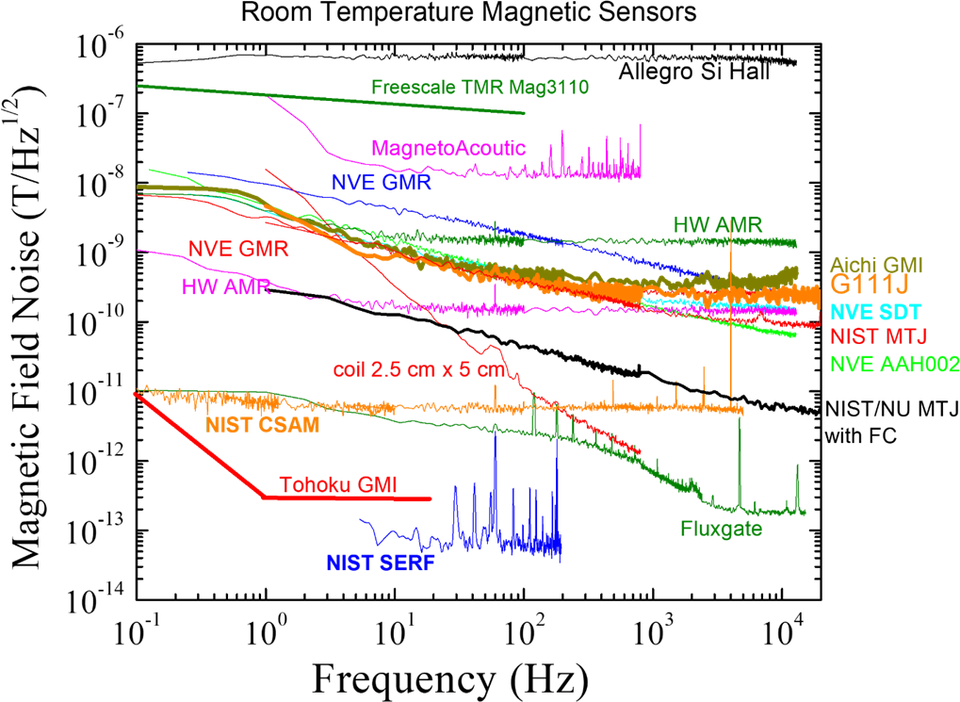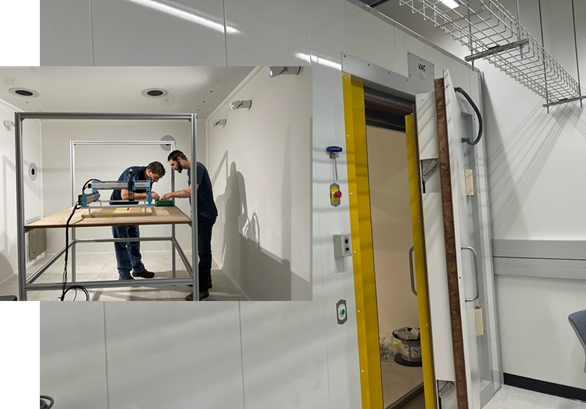Summary
The Magnetic Sensing and Metrology Program characterizes a wide variety of magnetic sensors used in biomedical, industrial, electronics, environmental, infrastructure, and defense applications. These include sensors being developed for magnetoencephalography (MEG), neural sensing, MRI, geophysical surveys, environmental noise monitoring, nondestructive evaluation (NDE), electronics and battery scanning, data storage, transportation, and battlefield monitoring. We work with a large variety of companies to help assess sensor performance and suitability for their applications.
Description
Magnetic sensors have a wide range of sensitivities, spatial resolution, dynamic range, bandwidths, size, and cost. Applications such as magnetic data storage and chip NDE require sensitivity of 1 nT, spatial resolution down to a few nanometers and bandwidths up to 10 GHz, while MEG requires sensitivity of 10 fT, spatial resolution of a few mm and bandwidths up to 10 kHz . All these applications require the correct choice of sensor, accurate characterization and calibration, and implementation . We have facilities to measure magnetic sensor performance from 1 fT to 20 T and facilities to create synthetic field environments to accurately test sensor performance in application environments.



